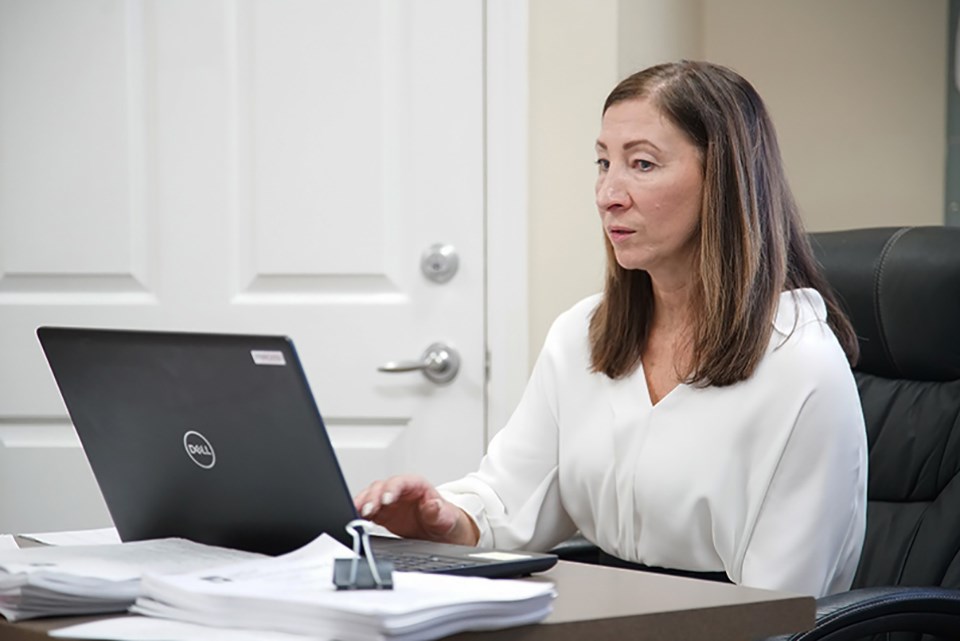qathet Regional District’s (qRD) finance committee has accepted the first draft of its 2023 to 2027 financial plan, which includes a snapshot of what taxation might look like.
At the November 16 finance committee meeting, manager of financial services Linda Greenan presented the assumptions for the five-year financial plan, as well as outlining the expected implications for 2023 taxation. Greenan said in preparing for the final plan, generally, in years past, there have been four drafts presented, which become more refined as more information becomes available.
“The way the plan is developed is that staff looks at the strategic plan and develops work plans to support the plan,” said Greenan. “We also develop work plans to support service levels of each service. We get input through many different sources. We look at all that input and start to develop the financial plan.
“The financial plan is zero-based, meaning that instead of looking at the plan we have from the previous year and just applying a percentage increase on it, staff actually looks at each line item and they estimate what it would cost to operate each specific service.”
In terms of service highlights, the big investment will be in waste management, with the resource-recovery centre buildings, infrastructure, access road and equipment, according to Greenan’s presentation.
Requisition changes
Greenan then outlined the requisition change between 2022 and 2023. The biggest changes in requisition are in City of Powell River, at 10.87 per cent, and Electoral Area A, at 12.02 per cent. The total requisition change indicates $9,006,482 in 2022, going to $9,769,613 in 2023, which is a change of $763,131, of 8.47 per cent overall.
In the city, in 2022, the tax rate for $100,000 of net taxable value was $63.07, proposed to go up to $69.92 in 2023, for a tax change per $100,000 of $6.85.
In Electoral Area A, the tax rate per $100,000 would go from $272.46 in 2022 to $303 in 2023.
In Electoral Area B, the tax rate per $100,000 would go from $159.27 in 2022 to $170.27 in 2023.
In Electoral Area C, the tax rate per $100,000 would go from $181.30 in 2022 to $189.58 in 2023.
In Electoral Area D, the tax rate per $100,000 would go from $199.73 in 2022 to $233.50 in 2023.
Greenan’s figures were based on the 2022 average home value of $516,654.95. The 2023 assessed value figures will not be available until early in the year. The taxation going to the regional district from an average home in the city would be $361.25, ranging up to the highest, in Electoral Area A, of $1,565.47 per average household.
“What I’m looking for from the board is direction at this meeting, and then I will incorporate that direction and any further information that we get from outside agencies and staff into draft two,” said Greenan. “That will be presented at the December finance committee meeting.”
Resource recovery
City director George Doubt had questions regarding the resource-recovery centre currently being planned and built.
“It’s probably the largest requisition increase to any of the electoral areas,” said Doubt.
He said he was looking at the expenditures from 2021 to 2023 in the capital plan. He asked staff to go through the expenditures and explain them, and when the borrowing will be spent.
Greenan said staff have tried to refine the budget for the commercial waste transfer station at the resource-recovery centre.
She said there is $5.1 million budgeted for the commercial waste transfer station building, and that is from borrowing. She said in the budget, each component has been separated to make it clear how the items are being funded.
“Work has already started on the design portion and the commercial waste transfer station is fully funded by borrowing, although we have a grant application into the strategic priorities fund, and we are hoping to hear about that in January. If we are successful with the grant funding, then that will reduce the borrowing required.
“We’ll draw down the borrowing as we need it and as the project progresses. We’ll come to the board to go through the long-term borrowing for the debenture debt. We’ll try to ladder the debt. We’ll do some interim financing and then we’ll turn it into a debenture debt as we need it for long-term borrowing.”
Greenan said the regional district has authorization for the borrowing and it totals $11.9 million. She said the second part of the borrowing bylaw has to come to the board for up to $6.4 million, which will come to directors in the next couple of months.
“The hope is that we might get some grant funding to reduce that,” said Doubt.
Greenan said that is correct.
The figure in the financial plan for waste management is for $15,831,000.



